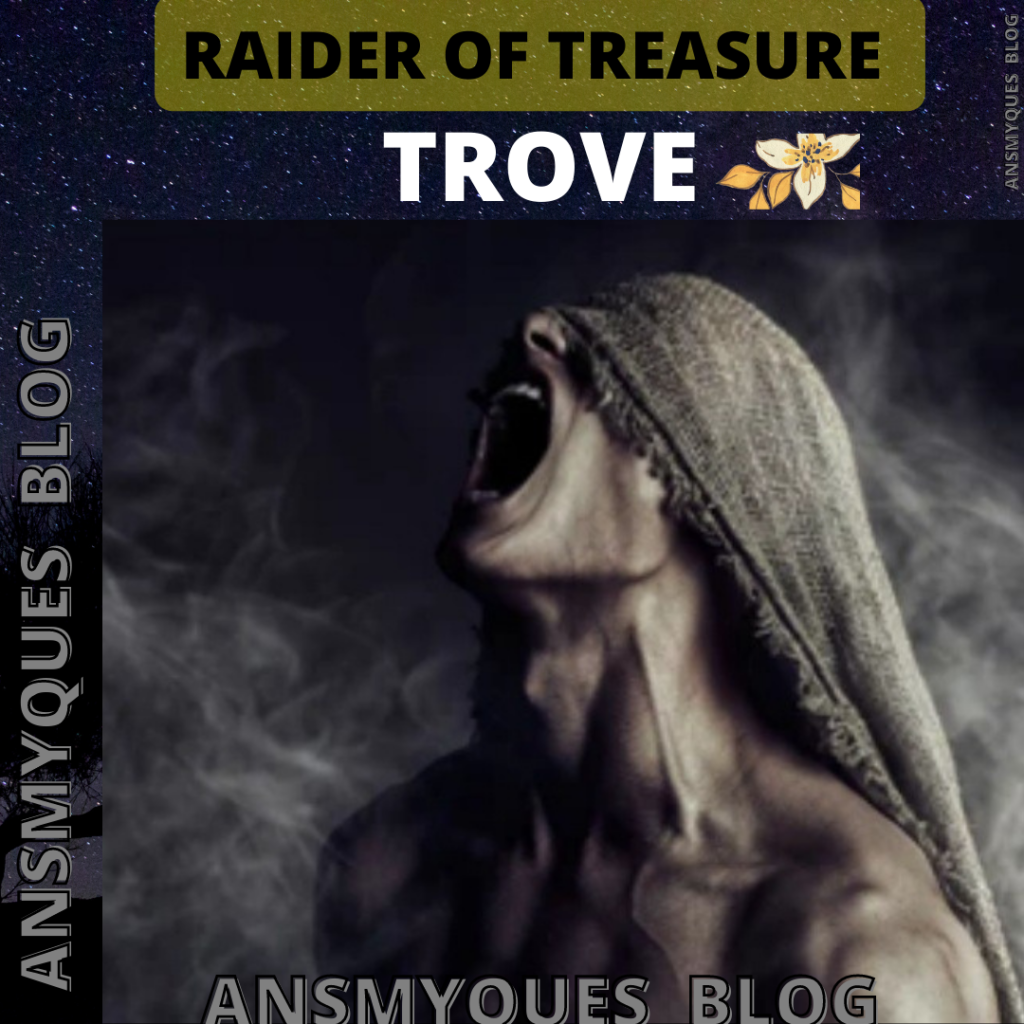Lade Wosornu’s “Raider of the Treasure Trove” is a profound poem that navigates themes of perception, rage, joy, and personal growth. Through its powerful imagery and thought-provoking language, Wosornu crafts a narrative of self-reflection, urging the reader to examine their internal state and the influence of their perceptions on their actions and outcomes. This article will provide an in-depth analysis of the figures of speech, mood, tone, and language in Wosornu’s poem, and it will help make these concepts accessible to students, teachers, and poetry enthusiasts. Additionally, we’ll explore classroom activities and assignments that will deepen understanding and engagement with this work.
The Poem: “Raider of the Treasure Trove”
But what can be worthy of your life?
What dearer than the gems or your dreams
The reason you are here? Always strive
To fly flags of joy and sail up streams
Powered by breeze of love, your course
Chattered in the ink of compassion
And fly roses wherever you pause
Heaven-on-earth your destination.
Of things which would blot out that brief
Or, breach your sail with arrows unseen
No, Rob you of your life, Rage is chief
Rage drags rags after you, of charity
Laughter, sweetness and light, Rage is thief
Enemy of equanimity
Rage spreads toxic fumes on every scene.
In essence, Rage spells calamity
It’s sole cause? Your perception of storms
Breaking around not upon your head
There are either snakes, deviants not norms.
As you think, so you feel. Watch your mind.
Rage sets sail. Can ruin lag behind?
I’ll fling roses wherever I berth
My destination is Heaven-on-earth.
Figures of Speech in “Raider of the Treasure Trove”
- Metaphor
- Example: “Rage is thief”
- Explanation: Rage is equated with a thief, representing how it steals peace, joy, and clarity from the individual’s life.
- Simile
- Example: “Rage sets sail”
- Explanation: Rage is compared to a ship setting sail, symbolizing how anger moves through life and can take control, just as a vessel carries its course across the seas.
- Personification
- Example: “Rage drags rags after you, of charity”
- Explanation: Rage is personified as dragging “rags” behind it, symbolizing how anger can bring negative consequences and overshadow positive traits like charity.
- Alliteration
- Example: “Laughter, sweetness and light, Rage is thief”
- Explanation: The repetition of the “L” sound in laughter, light, and sweetness emphasizes the positivity that rage robs from life.
- Symbolism
- Example: “Fly roses wherever you pause”
- Explanation: The rose symbolizes beauty, peace, and goodwill. By flying roses, the speaker metaphorically spreads joy and kindness wherever they go.
- Irony
- Example: “Heaven-on-earth your destination”
- Explanation: There’s an ironic contrast between the idealized destination of heaven-on-earth and the harsh reality of how rage distorts this vision.
- Allusion
- Example: “Heaven-on-earth”
- Explanation: This phrase alludes to a utopian state of peace, joy, and fulfillment, reminiscent of religious or philosophical ideas of the ultimate goal or paradise.
- Anaphora
- Example: “Rage is thief, Enemy of equanimity”
- Explanation: The repetition of “Rage” at the beginning of consecutive lines helps to emphasize the destructive nature of rage.
- Juxtaposition
- Example: “Rage is chief / Rage drags rags after you”
- Explanation: The juxtaposition of rage being described as both chief and dragging rags highlights its central role in creating turmoil and its consequences on personal well-being.
- Hyperbole
- Example: “Rage spreads toxic fumes on every scene”
- Explanation: The hyperbolic expression exaggerates the harmful impact of rage, depicting it as a toxic force that affects every situation it encounters.
- Oxymoron
- Example: “Toxic fumes on every scene”
- Explanation: The idea of something as destructive as “toxic fumes” spreading across all areas of life presents an oxymoronic contrast to the ideal of harmony and peace.
- Metonymy
- Example: “Chattered in the ink of compassion”
- Explanation: The “ink of compassion” is a metonym for the positive actions or intentions that stem from compassion, symbolizing the impact of kindness.
- Epiphora
- Example: “My destination is Heaven-on-earth”
- Explanation: The phrase at the end of multiple lines or stanzas serves to reinforce the speaker’s ultimate goal of achieving peace and joy.
- Personification
- Example: “Perception of storms / Breaking around not upon your head”
- Explanation: Perception is personified as being able to “break” around you, suggesting how our mindset shapes our reality.
- Antithesis
- Example: “As you think, so you feel. Watch your mind.”
- Explanation: The juxtaposition of thinking and feeling highlights how mental state influences emotional responses, emphasizing the power of perception.
Mood, Tone, and Language in “Raider of the Treasure Trove”
- Mood: The mood of the poem fluctuates between contemplation, urgency, and caution. The reader is invited to reflect deeply on personal perceptions and the way these influence emotional and physical states. There’s also an underlying sense of empowerment as the speaker urges the reader to take control of their mindset.
- Tone: The tone of the poem is both reflective and cautionary. The speaker’s voice is authoritative, warning against the dangers of rage and promoting the virtues of joy, peace, and compassion. There’s also an underlying optimism embedded in the speaker’s belief in the possibility of achieving heaven-on-earth.
- Language: Wosornu’s use of accessible yet evocative language enhances the poem’s reach and impact. The language flows smoothly and directly, making complex ideas about rage, perception, and life’s purpose easy to understand. The strategic use of metaphors, symbolism, and other figures of speech paints vivid images, turning abstract concepts into tangible ideas.
Classroom Activities for “Raider of the Treasure Trove”
- Perception Mapping
Have students create a mind map based on how perceptions influence feelings. They can then compare this to how perception of rage or calmness can shape a person’s life, drawing inspiration from the poem. - Creative Visual Representation
Ask students to illustrate a scene from the poem using images or symbols that represent rage, love, or joy. They can present their artwork and explain how these emotions are portrayed in the poem. - Group Discussion on Rage and Perception
Facilitate a group discussion where students explore how their perceptions of external situations can affect their internal emotions. They can share personal examples and connect these to the poem’s message. - Writing Exercise on Destinations and Dreams
Have students write a brief essay or poem on their personal “destination” in life, exploring how rage or positive emotions can influence their journey toward that goal. - Debate: The Role of Perception in Happiness
Organize a debate where students argue whether happiness is solely dependent on internal perceptions or external circumstances. They can use lines from the poem to support their arguments.
Classroom Assignments for “Raider of the Treasure Trove”
- Essay on Rage and Its Impact
Have students write a detailed essay on the destructive nature of rage as depicted in the poem and how it can be controlled or overcome to achieve personal growth. - Poetry Analysis
Assign a written analysis of the poem, focusing on its use of figures of speech and how these contribute to the overall meaning and message of the work. - Character Study
Ask students to write about the “Raider of the Treasure Trove” as a metaphorical character. They can explore what this figure represents and how it embodies the themes of the poem. - Mindfulness Practice Journal
Following the themes of perception in the poem, have students keep a journal for a week noting how their perceptions of daily events influence their emotional responses. They should reflect on how mindfulness could affect their own sense of calm or rage. - Creative Rewriting
Ask students to rewrite the poem from the perspective of someone struggling with rage. How would the tone and message change if the poem were from the viewpoint of someone not yet in control of their emotions?
Conclusion
“Raider of the Treasure Trove” by Lade Wosornu offers profound insights into the impact of perception on emotional well-being and the power of choice in how we respond to life’s challenges. By examining figures of speech, mood, tone, and language, students and readers alike can gain a deeper understanding of how poetry can convey complex human experiences in relatable terms. The poem’s message is timeless: Our perceptions shape our reality, and it’s within our power to choose joy over rage and peace over turmoil.




